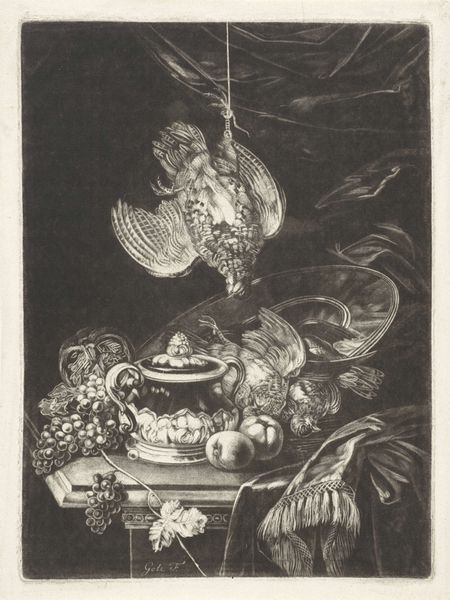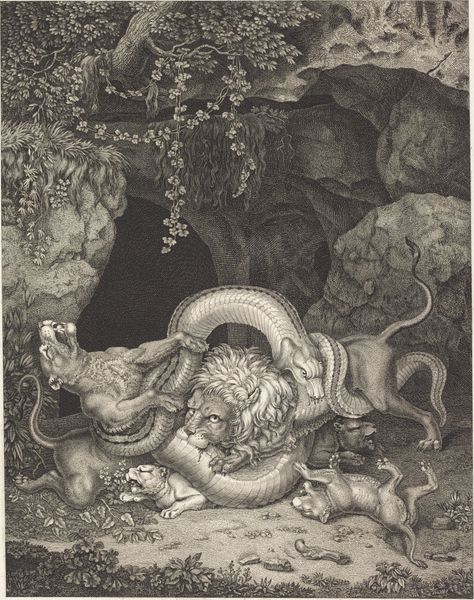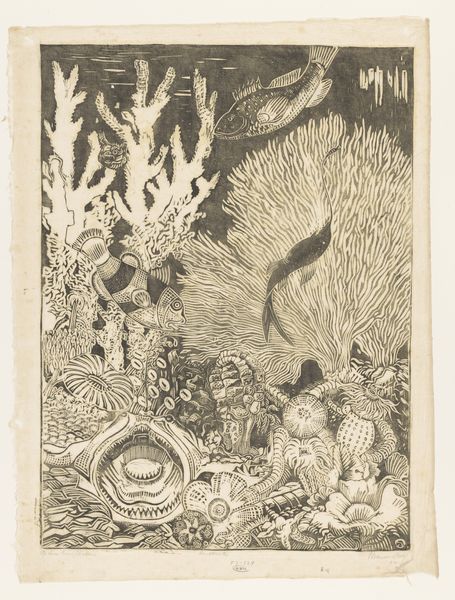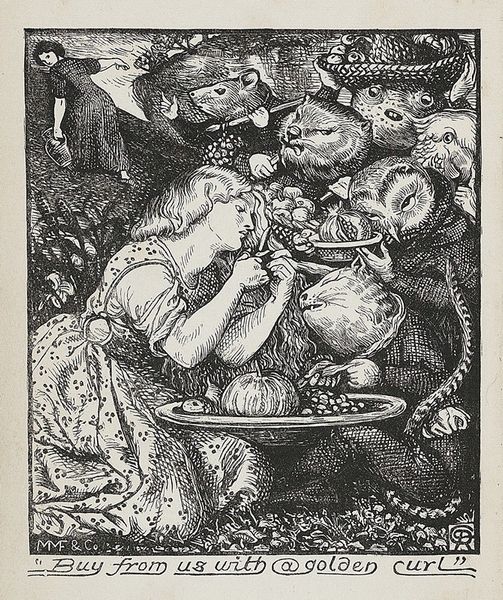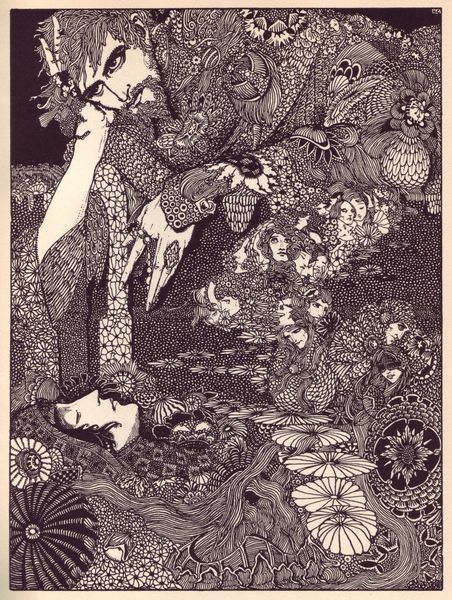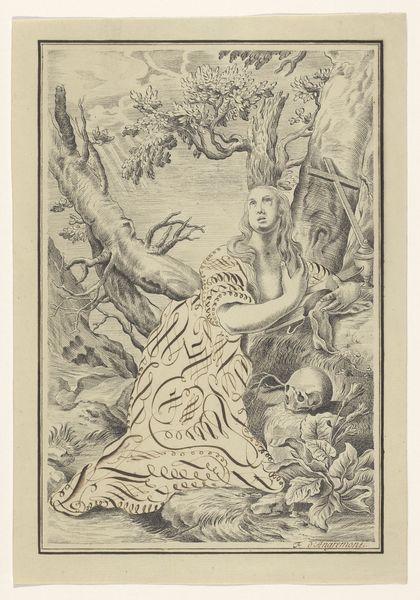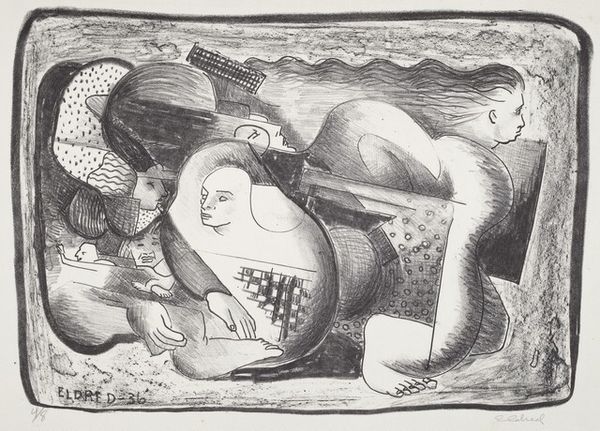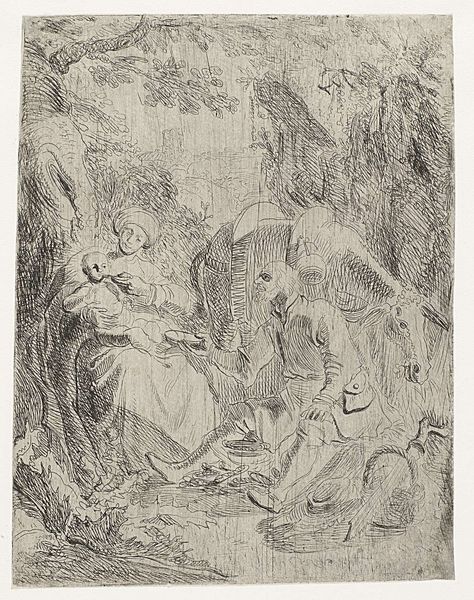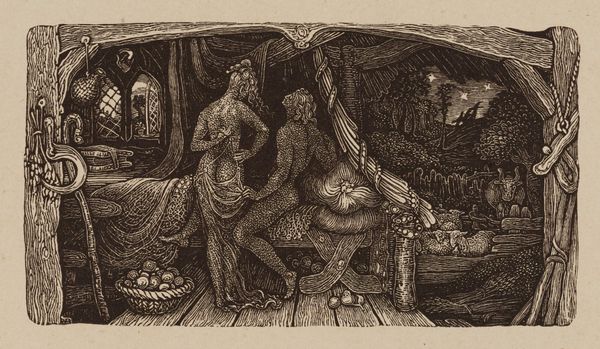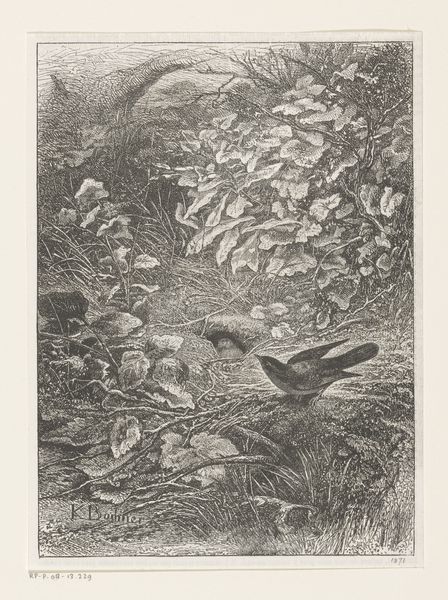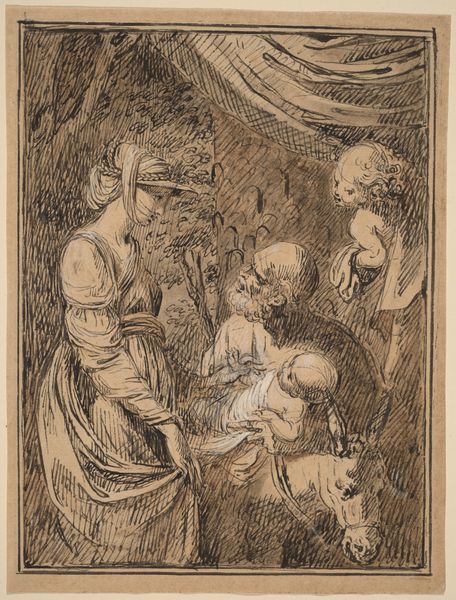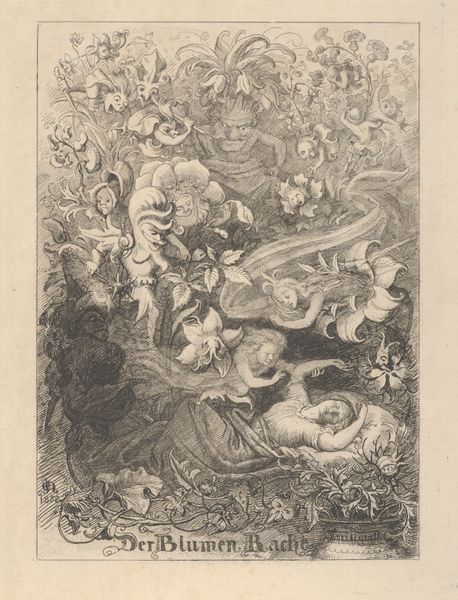
"Buy From Us With a Golden Curl," for "The Goblin Market" 1861 - 1862
0:00
0:00
drawing, print, ink, engraving
#
drawing
#
narrative-art
#
pen drawing
# print
#
fantasy-art
#
figuration
#
ink
#
fruit
#
symbolism
#
engraving
Dimensions: Sheet: 4 1/2 × 3 13/16 in. (11.4 × 9.7 cm)
Copyright: Public Domain
Curator: This is Dante Gabriel Rossetti’s pen and ink drawing, "Buy From Us With a Golden Curl," made between 1861 and 1862, now housed at the Metropolitan Museum. It’s an engraving created for an edition of his sister Christina Rossetti's poem, "The Goblin Market." Editor: Well, immediately, I feel transported into a darkly whimsical fairytale. The scene has this palpable sense of strange barter occurring. I mean, just look at those goblin faces! Slightly unsettling, but captivating, right? Curator: Absolutely. Rossetti was deeply involved in the Arts and Crafts movement, and his illustrations often served as a visual counterpoint to the commodification he saw encroaching upon Victorian society. This drawing directly engages with that theme; it emphasizes production. How are these "goods" actually made? Who profits? Editor: It also explores female desire, no? Look at that figure offering a piece of her hair. There is a hint of vulnerability, but strength, in her engagement with the goblins. Her desire for the fruit feels both tempting and dangerous, you know? Curator: Precisely, and the method of production reinforces this duality. Pen and ink allowed for meticulous detail, almost an obsessive quality that mirrors the seductive allure of the Goblin Market, but prints enabled reproducibility on a mass scale. Editor: Mass appeal indeed, just like our need for sugary treats now. Did these little guys ever think their goods would hang on museum walls? Perhaps this artwork acts as a moral meditation on desire itself. Rossetti has captured something essential about temptation, offering and consequences. Curator: I think it also hints at a crucial discourse about the position of female artists, and creatives more broadly, within Victorian economics. The very exchange being portrayed also hints at who gets valued and how they get exploited in the cycle of artistic creation. Editor: It is endlessly fascinating and offers a darker take on beauty. A little morbid maybe? But that’s what makes it linger. This small image opens to so many perspectives on art, longing, and even a slightly menacing trade show.
Comments
No comments
Be the first to comment and join the conversation on the ultimate creative platform.
